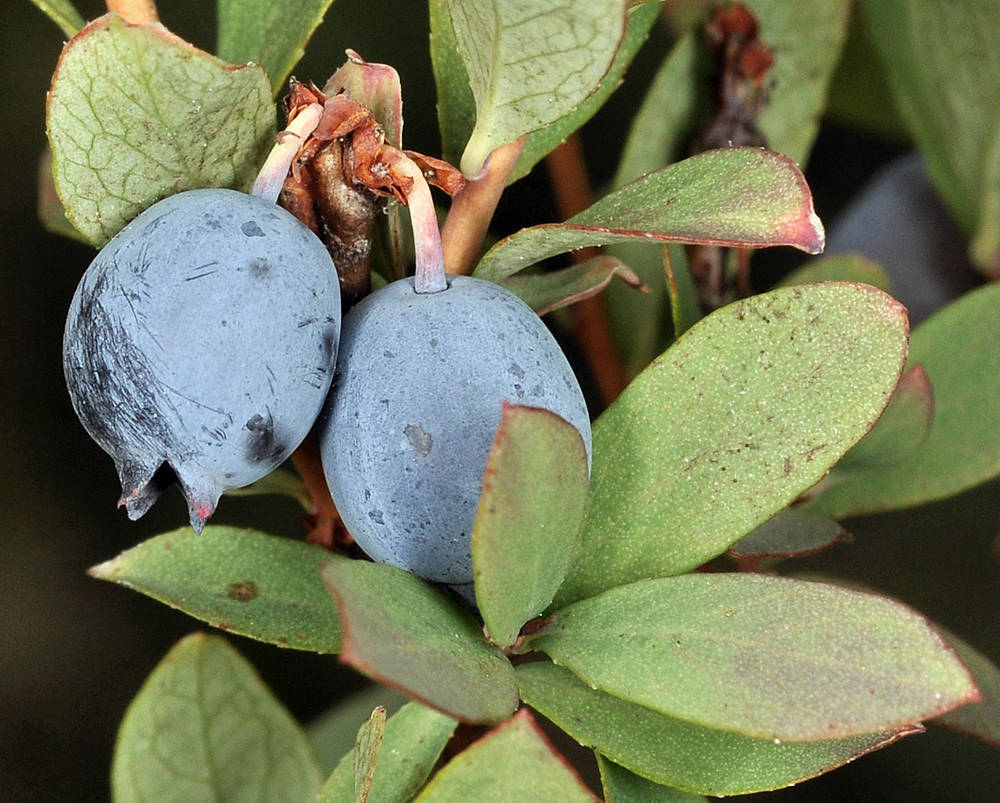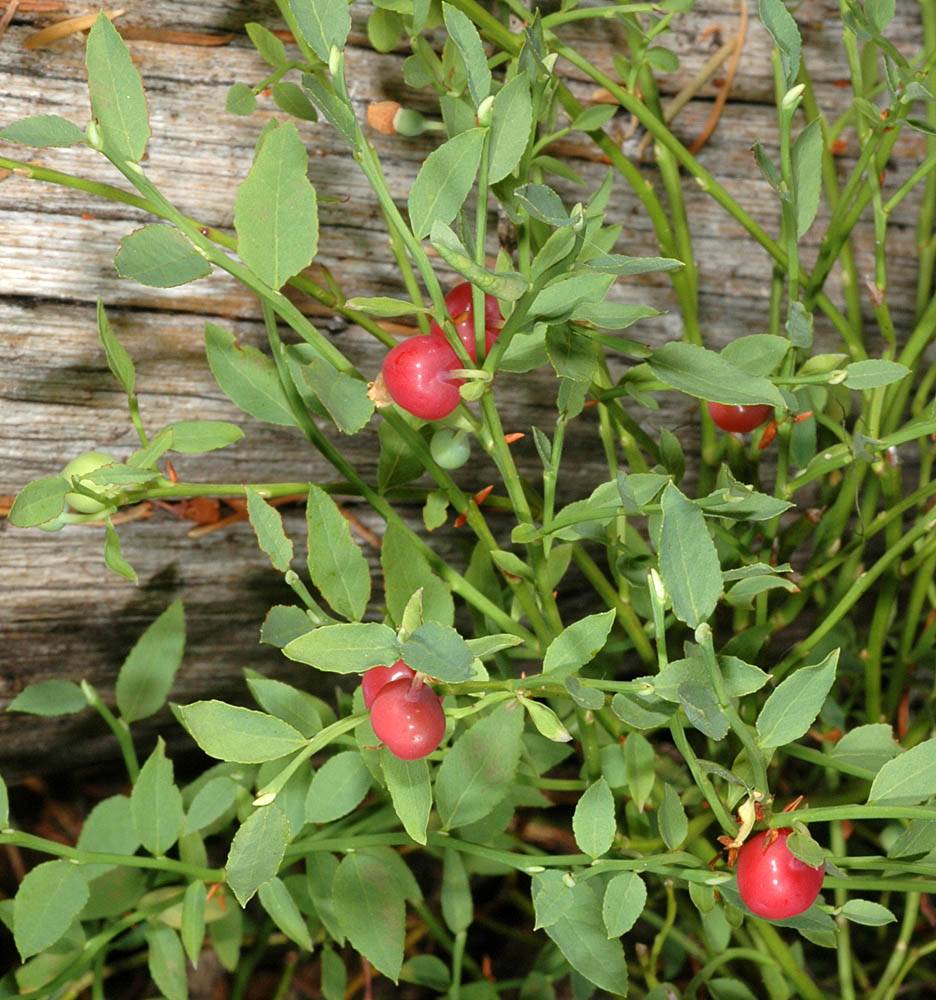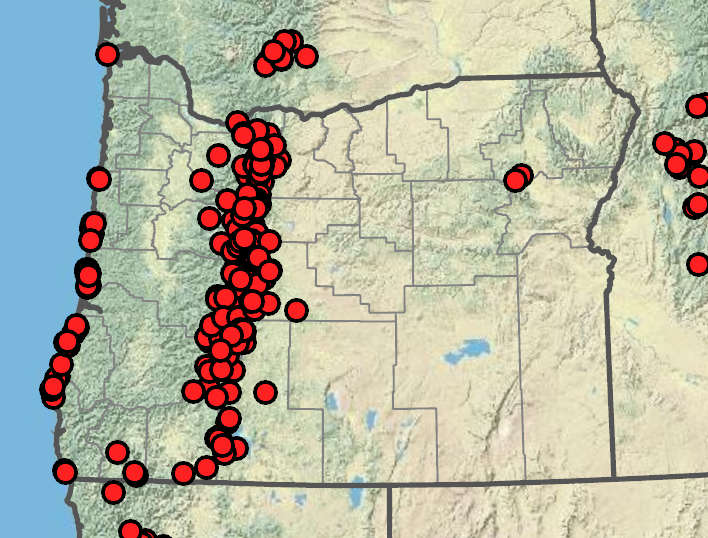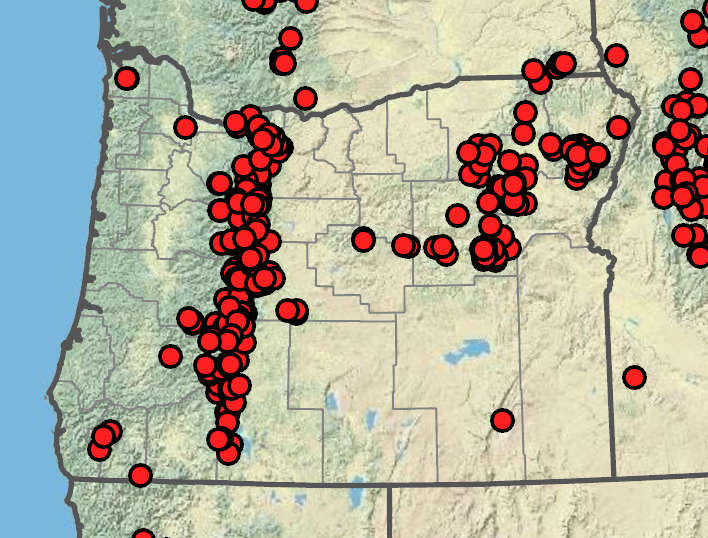Vaccinium uliginosum
Vaccinium scoparium
bog bilberry, bog blueberry
grouseberry, grouse whortleberry
ovate to elliptic, 9–29 × 4–18 mm; thin or thick at maturity;
margins entire;
tips rounded to acute;
surfaces abaxially glabrous or glaucous, adaxially glabrous.
elliptic to ovate-lanceolate, 7–15 × 4–14 mm, light green abaxially, green adaxially; thin; flexible;
margins finely serrate from tips to near base, prominently veined;
tips acute;
surfaces abaxially often glandular, adaxially glabrous.
racemes, 2–4-flowered, occasionally 1-flowered.
solitary flowers in axils.
distinct;
sepals 4 or 5, usually glaucous;
corollas urceolate, 4–6 × 2–5 mm, white to pink, glaucous;
petals 4 or 5;
filaments ? anthers, glabrous.
sepals 5;
calyces very shallowly lobed, glabrous;
petals 5;
corollas urceolate to globose, 3–4 × 3–5 mm, pink, glaucous;
filaments glabrous.
4–9 mm in diameter, blue to bluish black, with a faint bloom.
3–6 mm in diameter, bright red to bluish purple; without a bloom.
=24, 48, 72.
=24.
Vaccinium uliginosum
Vaccinium scoparium
Wet mid-elevation montane and coastal habitats. Flowering May–Sep. 0–2400 m. BW, Casc, ECas, Est, Sisk. CA, ID, NV, WA; northern US and Canada; Asia, Europe. Native.
Some authorities consider the coastal form of V. uliginosum a distinct species (V. occidentale). If recognized, this species would be identified by its distinctly reticulated leaf veins, thin leaves, and smaller fruits.
Subalpine and alpine meadows, slopes and pine forests. Flowering May–Aug. 1000–2700 m. BR, BW, Casc, CR, ECas, Sisk. CA, ID, NV, WA; northeast to Alberta, east to SD, southeast to NM. Native.
See also V. myrtillus.
Stephen Meyers
Stephen Meyers
- Local floras:
BC,
OR,
WA
- Local Web sites:
Flora NW,
PNW Herbaria
WildflowerSearch
iNaturalist (observations)
USDA Plants Database
- LBJ Wildflower Center
- SEINet
- Plants of the World Online
- Encyclopedia of Life
- Wikipedia
- Google Image Search
- Local floras:
BC,
CA,
OR,
WA
- Local Web sites:
CalFlora,
CalPhotos,
Flora NW,
PNW Herbaria,
Turner Photog.
WildflowerSearch
iNaturalist (observations)
USDA Plants Database
- LBJ Wildflower Center
- SEINet
- Plants of the World Online
- Encyclopedia of Life
- Wikipedia
- Google Image Search





